A Closer Look at Japanese Ceramic Art
Japanese ceramic art is not just a craft; it's a vibrant tapestry woven through centuries of history, culture, and innovation. When you think about ceramics, you might picture simple dishes or decorative pots, but in Japan, this art form is a profound expression of identity and tradition. Each piece tells a story, reflecting the values and aesthetics of the time it was created. From the delicate porcelain of Imari to the earthy tones of Shino ware, Japanese ceramics offer a fascinating glimpse into the soul of a nation.
The journey of Japanese ceramic art began over 14,000 years ago with the Jomon period, where early artisans crafted rudimentary pottery primarily for functional purposes. As centuries passed, this craft evolved significantly, influenced by various cultural exchanges, including the arrival of Buddhism and trade with China. The techniques and styles developed during these times laid the foundation for what we now recognize as traditional Japanese ceramics.
As we explore the rich history of this art form, it’s essential to understand how the techniques and aesthetics have transformed through different eras. The elegance of Japanese ceramics is not just in their beauty but also in the meticulous methods employed by artisans. Each technique, whether it’s the ancient Raku firing or the precision of wheel-throwing, showcases the dedication and skill that define this remarkable craft.
Moreover, the significance of Japanese ceramics goes beyond mere functionality. These pieces often serve as cultural symbols, especially in practices such as the tea ceremony, where the choice of tea ware can enhance the experience of this meditative ritual. In essence, Japanese ceramics embody a philosophy that values simplicity, beauty, and a deep connection to nature.
In this article, we will delve deeper into the history, traditional techniques, notable styles, and contemporary trends in Japanese ceramics. We will also explore how modern artists are pushing boundaries while still honoring the rich traditions of their predecessors. So, let’s embark on this journey through the world of Japanese ceramic art, where each piece is a testament to the artistry and cultural heritage of Japan.
- What is the significance of Raku firing in Japanese ceramics? Raku firing is significant as it produces unique textures and colors, particularly valued in the context of tea ceremonies.
- How has Western art influenced Japanese ceramics? Western art has introduced new techniques and perspectives, allowing contemporary Japanese artists to blend traditional methods with modern aesthetics.
- What are the main differences between handbuilding and wheel-throwing? Handbuilding allows for more organic shapes and personal expression, while wheel-throwing offers precision and uniformity in forms.

History of Japanese Ceramics
Japanese ceramic art boasts a rich and intricate history that stretches back over 14,000 years, making it one of the oldest continuous ceramic traditions in the world. The journey of Japanese ceramics began during the Jomon period, where early artisans crafted pottery with unique cord-marked designs. These pieces were primarily utilitarian, serving as storage vessels for food and water, but they also reflected the aesthetic sensibilities of the time.
As we move into the Yayoi period, around 300 BCE to 300 CE, the introduction of rice cultivation led to a shift in ceramic production. Pottery became more refined, with new techniques emerging, such as wheel-throwing, which allowed for greater uniformity and sophistication in shape and design. This period saw the birth of the first true stoneware in Japan, a crucial development that would pave the way for future innovations.
Fast forward to the Heian period (794-1185), and we witness a significant transformation in the aesthetic approach to ceramics. The influence of Chinese ceramics became apparent, with Japanese potters adopting and adapting various styles. This era also marked the emergence of the first kilns, such as those at Seto and Tokoname, which are still celebrated today for their high-quality pottery.
During the Muromachi period (1336-1573), the concept of Wabi-Sabi began to influence ceramic art, emphasizing the beauty of imperfection and the natural aging process of materials. This philosophy led to the development of rustic pottery styles, such as Shino and Oribe, which are characterized by their earthy tones and spontaneous glazing techniques.
The Edo period (1603-1868) marked a golden age for Japanese ceramics, with the rise of famous styles like Imari and Kutani. The introduction of vibrant colors and intricate patterns not only captivated the domestic market but also caught the attention of the West, leading to a flourishing export trade. This period saw ceramics being used not just for practical purposes but also as decorative art, showcasing the skill and creativity of Japanese artisans.
In the modern era, Japanese ceramics have continued to evolve, integrating traditional techniques with contemporary practices. Today's artists often draw inspiration from the past while experimenting with new materials and forms, creating a dynamic and ever-evolving art form. The rich history of Japanese ceramics is not just a tale of craftsmanship; it's a narrative woven into the fabric of Japanese culture, reflecting the values, aesthetics, and innovations of each era.
As we reflect on the history of Japanese ceramics, it's clear that this art form is a testament to the enduring spirit of creativity and cultural exchange. From its ancient beginnings to its modern interpretations, Japanese ceramics continue to inspire and captivate audiences around the globe.
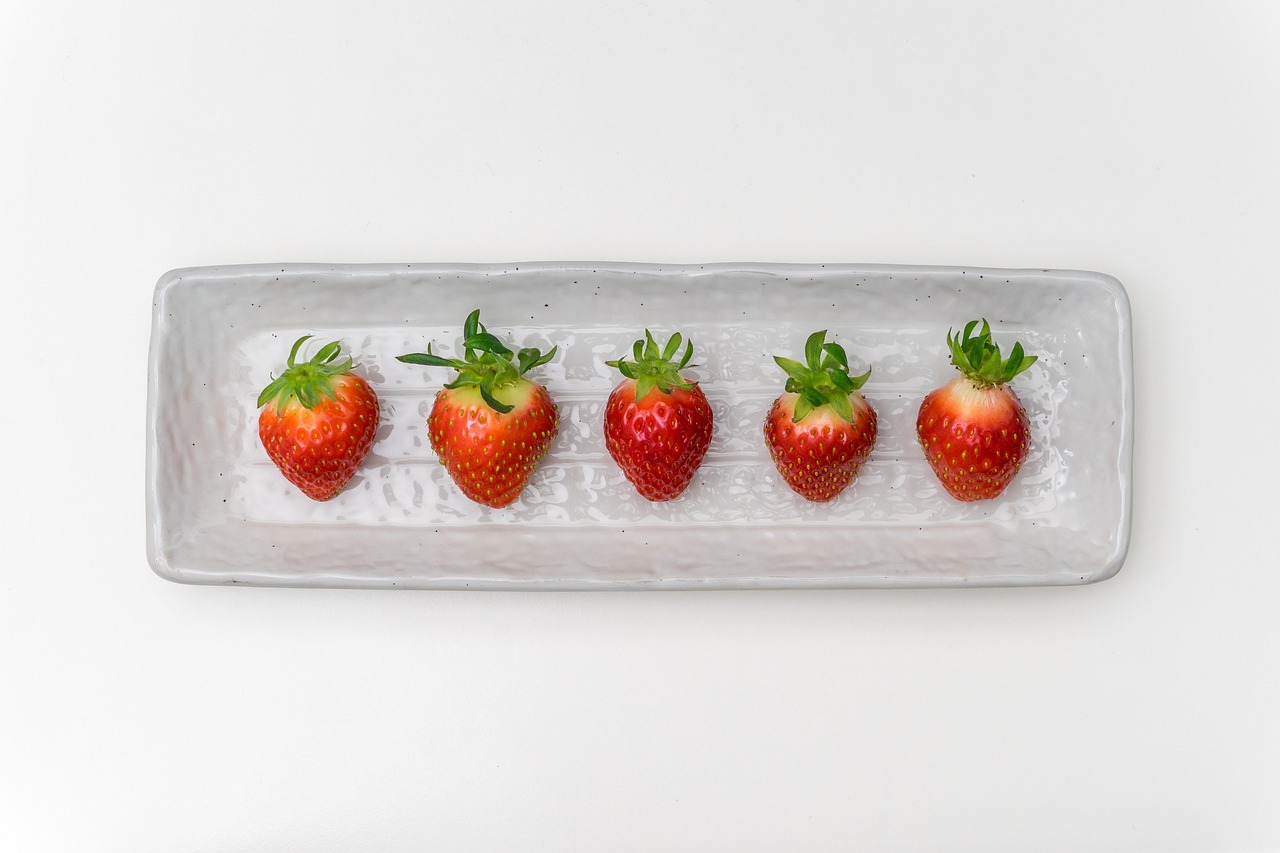
Traditional Techniques
When it comes to Japanese ceramic art, the are nothing short of mesmerizing. These methods, passed down through generations, are a testament to the skill and dedication of artisans who have devoted their lives to this craft. At the heart of these techniques lies a profound respect for nature and a commitment to perfection. From the selection of clay to the final firing, every step is imbued with cultural significance and artistic intent.
One of the most notable aspects of traditional Japanese ceramics is the use of local materials. Artisans often source clay from their surroundings, which not only influences the texture and color of the pottery but also connects the artist to their environment. This practice of utilizing local resources fosters a deep appreciation for the land and its offerings. Furthermore, the firing process varies significantly, with different techniques producing unique results that reflect the artist's vision.
Among these techniques, glazing stands out as an art form in its own right. Glazes can be transparent, opaque, or even textured, and they play a crucial role in defining the final appearance of the piece. The delicate balance of minerals and the firing temperature can lead to stunning effects, creating a visual dialogue between the piece and its observer. For instance, the famous Shino glaze, known for its earthy tones and rustic charm, is a perfect example of how glazing can elevate a ceramic piece from mere utility to a work of art.
One of the most fascinating techniques in traditional Japanese ceramics is Raku firing. This method is celebrated for its ability to produce distinctive textures and colors that cannot be achieved through conventional firing techniques. The process involves removing pottery from the kiln while it is still glowing hot and placing it into combustible materials. The ensuing chemical reactions create unique surface effects, making each piece a one-of-a-kind masterpiece.
The origins of Raku can be traced back to the 16th century, closely intertwined with the Japanese tea ceremony. The aesthetic principles of Wabi-sabi, which embrace imperfection and transience, are deeply embedded in Raku pottery. This connection to the tea ceremony not only highlights the importance of Raku in Japanese culture but also illustrates how art and spirituality can coexist harmoniously.
In contemporary times, Raku has evolved remarkably. Artists are now experimenting with new techniques and materials, pushing the boundaries of tradition. Modern Raku practices often incorporate elements from Western art movements, leading to a fusion that respects the past while embracing the future. This evolution showcases the dynamic nature of Japanese ceramic art, proving that while tradition is essential, innovation is equally vital.
Another critical aspect of traditional Japanese ceramics is the debate between handbuilding and wheel-throwing. Handbuilding allows for a more organic and personal approach, where artisans shape their creations using their hands, resulting in unique forms that often reflect the artist's individual style. On the other hand, wheel-throwing, which involves the use of a potter's wheel, offers precision and uniformity, producing pieces that are symmetrically balanced. Both methods have their own merits and are often employed in conjunction to create stunning ceramic works.
Ultimately, the traditional techniques of Japanese ceramics are a rich tapestry of history, culture, and artistry. They not only reflect the skills of the artisans but also tell stories of the past, making each piece a valuable artifact of Japanese heritage.
Q1: What is Raku firing?
A1: Raku firing is a unique pottery technique that involves removing pottery from the kiln while it is still hot and placing it in combustible materials, creating distinctive textures and colors.
Q2: How does handbuilding differ from wheel-throwing?
A2: Handbuilding is a more organic technique where artisans shape pottery using their hands, while wheel-throwing involves using a potter's wheel for precision and uniformity.
Q3: What materials are used in traditional Japanese ceramics?
A3: Traditional Japanese ceramics often utilize locally sourced clay and various minerals for glazing, which contribute to the unique characteristics of each piece.
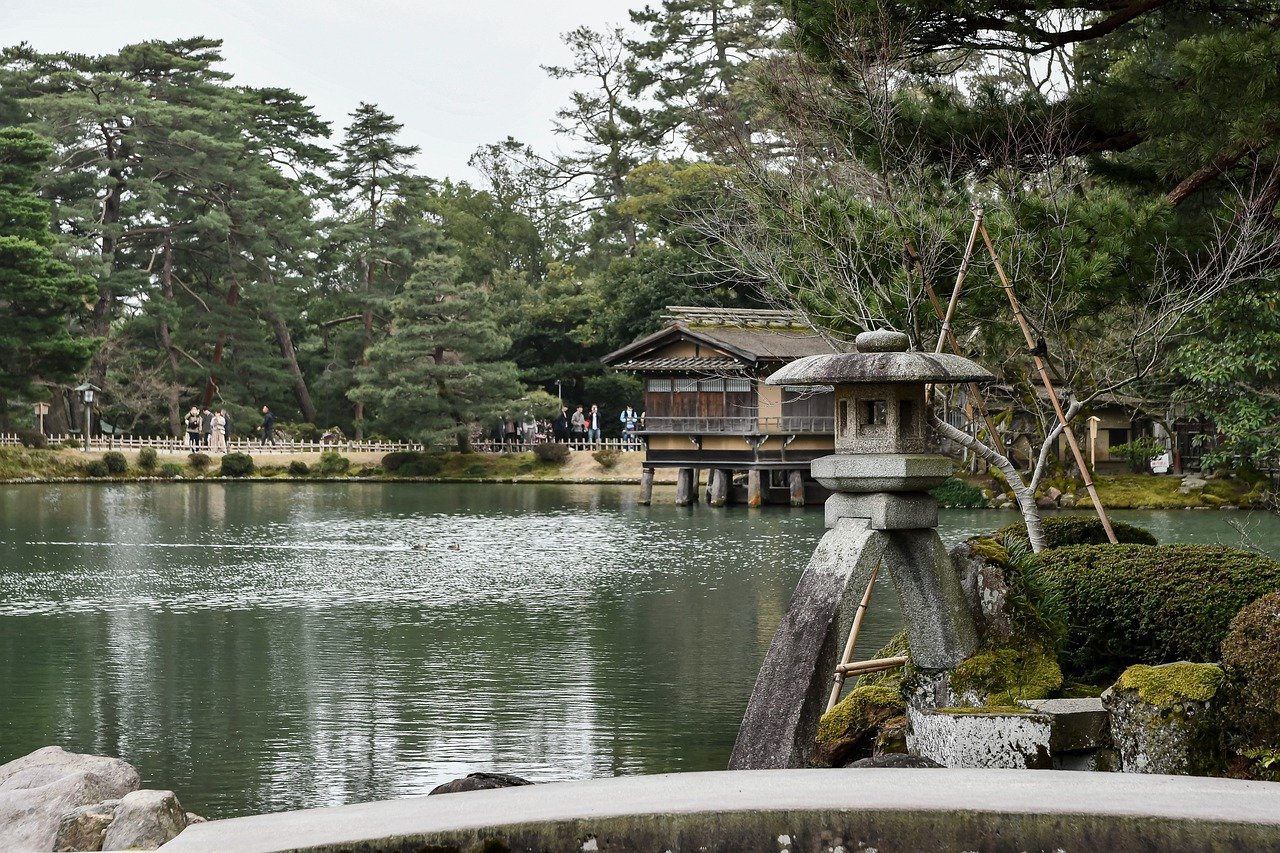
Raku Firing
is a fascinating and ancient Japanese pottery technique that creates unique and visually stunning ceramic pieces. Unlike traditional firing methods that rely on long kiln times and controlled atmospheres, Raku firing is characterized by its rapid process and unpredictable results. This technique not only produces distinctive textures and colors but also holds a special significance in the context of Japanese tea ceremonies, where the aesthetics of the tea utensils are paramount.
The essence of Raku firing lies in its immediacy and the element of surprise. The process typically involves removing the pottery from the kiln while it is still glowing hot and placing it into combustible materials, such as sawdust or leaves. This sudden transition creates a reduction atmosphere, which alters the glaze and clay body, resulting in unexpected and beautiful effects. The colors can range from deep blacks to vibrant reds and blues, with metallic sheens that catch the light in mesmerizing ways.
Historically, Raku's significance has been deeply intertwined with the Japanese tea ceremony, or chanoyu. The tea ceremony emphasizes harmony, respect, purity, and tranquility, and the vessels used in this ritual must reflect these values. Raku pottery, with its organic forms and rich textures, embodies the very spirit of this practice. Each piece is not just a functional item but a work of art that contributes to the overall experience of the ceremony.
The origins of Raku can be traced back to the 16th century, during the time of the tea master Sen no Rikyū, who played a crucial role in shaping the aesthetics of the tea ceremony. Rikyū commissioned the first Raku ware from the potter Chojiro, establishing a tradition that would endure for centuries. The name "Raku" itself means "enjoyment" or "ease," reflecting the philosophy behind the tea ceremony and the art of pottery.
As Raku ware gained popularity, it became a symbol of the simplicity and elegance that characterized the tea ceremony. The pieces were often handmade, emphasizing the individual touch of the artisan. This personal connection to the craft is what makes Raku pottery so special; each piece tells a story, embodying the spirit of its creator.
In contemporary times, Raku has evolved significantly, with artists experimenting with new techniques and materials. While traditional Raku focuses on the historical methods, many modern ceramists are pushing the boundaries of this art form. They incorporate new glazes, firing techniques, and even mixed media elements, creating pieces that resonate with today’s aesthetic sensibilities.
Moreover, the influence of global art movements has encouraged Japanese artists to blend traditional Raku practices with contemporary styles. This fusion not only preserves the rich heritage of Raku but also allows for innovation and creativity to flourish. As a result, today's Raku pottery continues to captivate and inspire, bridging the gap between the past and the present.
| Raku Firing Characteristics | Traditional Features | Modern Innovations |
|---|---|---|
| Firing Process | Quick removal from kiln | Experimentation with firing methods |
| Surface Finish | Distinctive textures and colors | Incorporation of new glazes |
| Cultural Significance | Integral to the tea ceremony | Fusion with contemporary art |
In conclusion, Raku firing is more than just a technique; it is a celebration of creativity and a testament to the enduring legacy of Japanese ceramic art. Whether you are a collector, a tea ceremony enthusiast, or simply an admirer of beautiful objects, Raku pottery offers a glimpse into the heart and soul of Japan's rich artistic heritage.
- What is Raku firing? Raku firing is a unique pottery technique that involves removing pieces from the kiln while they are still hot and placing them in combustible materials to create distinctive colors and textures.
- What is the significance of Raku in Japanese culture? Raku pottery is integral to the Japanese tea ceremony, embodying the values of harmony, respect, purity, and tranquility.
- How has Raku evolved in modern times? Contemporary artists have adapted Raku techniques by experimenting with new glazes and firing methods, blending traditional practices with modern aesthetics.
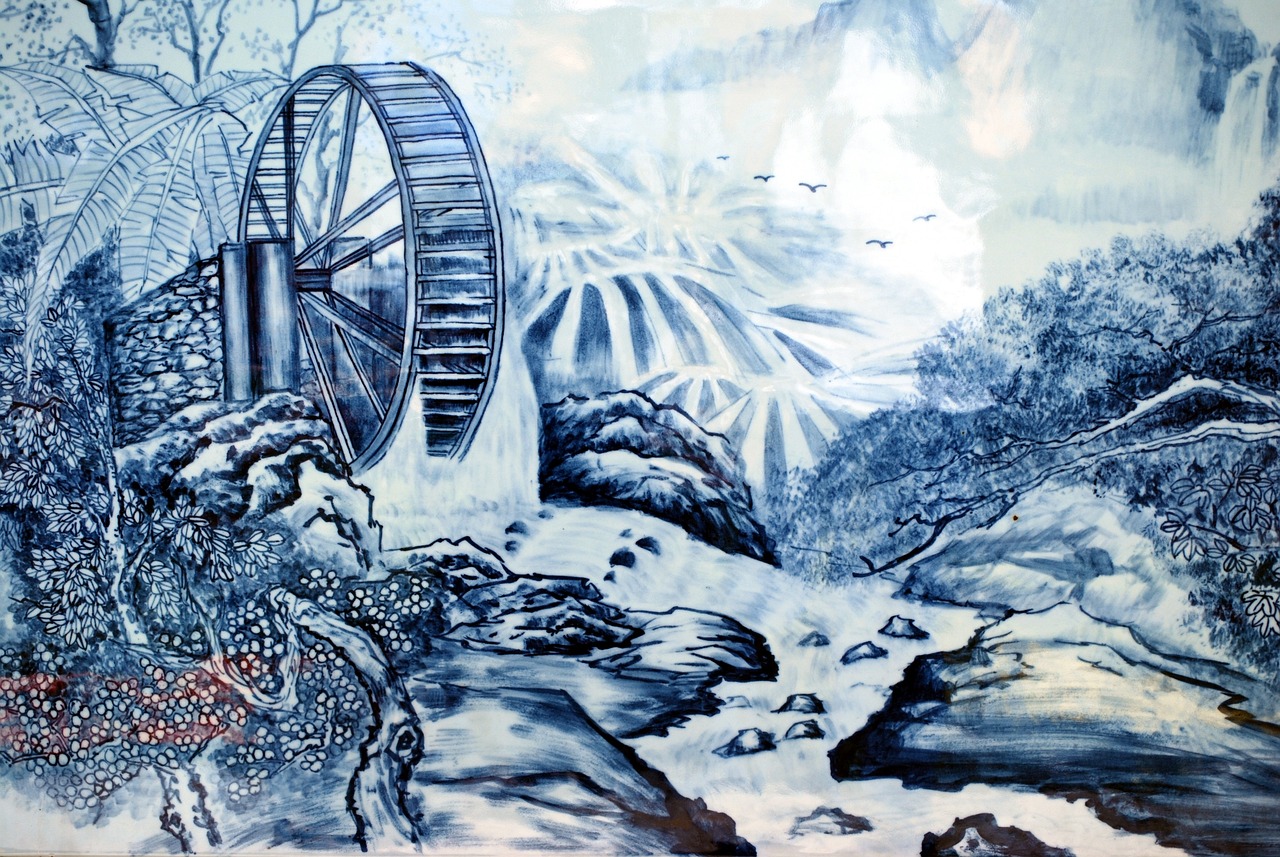
Raku's Origins
Raku pottery, with its unique aesthetic and cultural significance, has a fascinating history that dates back to the 16th century. It was born out of the Japanese tea ceremony, a ritual that emphasizes simplicity and mindfulness. The word "Raku" itself means enjoyment or ease in Japanese, which perfectly encapsulates the philosophy behind this art form. Originally developed for the tea master Sen no Rikyū, Raku pottery was intended to enhance the experience of the tea ceremony, creating a connection between the artisan, the tea, and the guests.
One of the most captivating aspects of Raku is its spontaneity. Unlike traditional ceramics that undergo a lengthy firing process, Raku pieces are removed from the kiln while they are still glowing hot. This technique allows for dramatic changes in color and texture as the pottery cools rapidly in the open air. The immediate contrast between the heat and the surrounding environment creates a myriad of effects, making each piece truly one-of-a-kind.
Raku's origins are deeply intertwined with the aesthetics of Wabi-Sabi, a Japanese philosophy that finds beauty in imperfection and transience. This philosophy influenced not just the creation of Raku pottery, but also its appreciation. The uneven surfaces and unpredictable glazes of Raku pieces reflect the notion that beauty lies in the imperfect, inviting viewers to appreciate the fleeting nature of life itself.
Over the years, Raku has evolved, but its roots remain firmly planted in the traditions of the past. The original Raku ware was characterized by its simple forms and earthy tones, which were a stark contrast to the highly decorated porcelain of the time. As the art form developed, it began to incorporate more vibrant colors and intricate designs, showcasing the creativity and skill of the artisans. Today, Raku is celebrated not only in Japan but around the world, with artists continually pushing the boundaries of this ancient craft.
In conclusion, the origins of Raku pottery are a testament to the rich tapestry of Japanese culture. From its humble beginnings in the tea ceremony to its modern interpretations, Raku continues to captivate and inspire both artists and enthusiasts alike. It serves as a reminder of the beauty found in simplicity and the importance of embracing the unexpected.
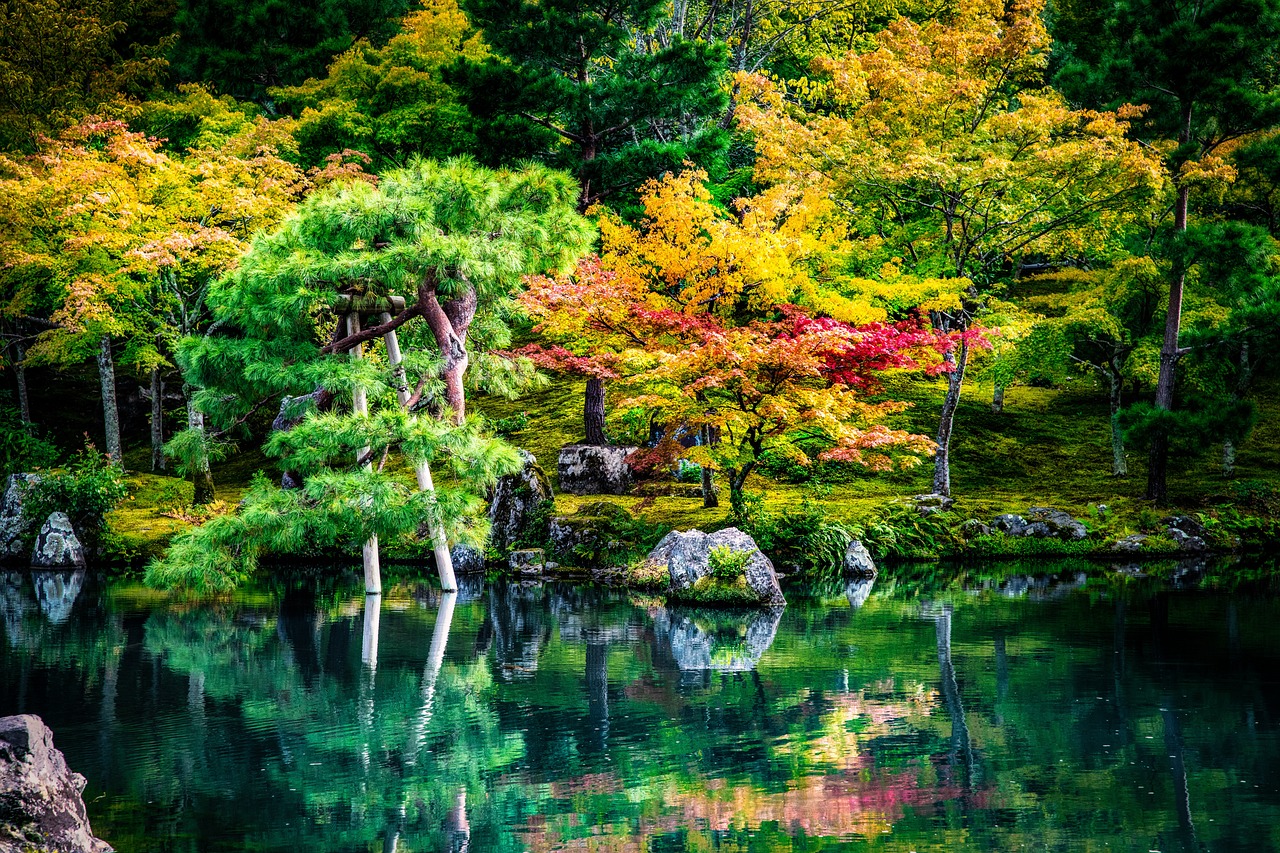
Modern Adaptations
In the ever-evolving world of ceramics, the traditional practice of Raku has seen a fascinating transformation. As contemporary artists dive into this ancient technique, they are not merely replicating the past; they are reimagining it. This fusion of old and new has opened up a realm of possibilities, allowing for innovative expressions that resonate with today’s aesthetic sensibilities. Many artists are experimenting with different firing methods, glazes, and even incorporating mixed media elements to create pieces that challenge the norms of traditional Raku.
One of the most striking aspects of modern Raku is its ability to reflect personal narratives and contemporary themes. Artists are using this medium to explore issues such as environmental sustainability, cultural identity, and the human experience. For instance, some ceramists are embracing eco-friendly materials and techniques that minimize their environmental impact, while others are drawing on their cultural heritage to create works that speak to their roots.
Moreover, the community surrounding Raku has become increasingly collaborative. Workshops and exhibitions are popping up worldwide, where artists share their techniques and insights. This spirit of collaboration not only fosters innovation but also creates a vibrant dialogue between artists, collectors, and enthusiasts. Such interactions often lead to the emergence of new styles and techniques that blend traditional Raku with other artistic movements.
In addition, social media has played a pivotal role in the evolution of modern Raku. Platforms like Instagram and Pinterest allow artists to showcase their work to a global audience, gaining inspiration from diverse cultures and practices. As a result, we see an exciting cross-pollination of ideas, where Raku artists incorporate elements from Western art movements, such as Minimalism and Abstract Expressionism, into their creations. This blending of styles has not only expanded the visual language of Raku but has also made it more accessible to a broader audience.
To illustrate the impact of modern adaptations, consider the following table showcasing some contemporary Raku artists and their innovative approaches:
| Artist | Technique | Notable Works |
|---|---|---|
| Yoshiko Kato | Mixed Media Raku | “Nature’s Echo,” “Urban Rhythms” |
| Ken Matsuzaki | Traditional with Modern Glazes | “Harmony,” “Whispers of Time” |
| Shoko Hasegawa | Eco-Friendly Materials | “Earth’s Palette,” “Reflections” |
As we look to the future, it’s clear that modern adaptations of Raku are not just a fleeting trend but a dynamic evolution of a cherished tradition. The dialogue between past and present continues to enrich the art form, ensuring that Raku remains a vibrant and relevant medium in the world of ceramics. Whether through innovative techniques or the incorporation of contemporary themes, these adaptations breathe new life into a time-honored practice, making it exciting for both artists and collectors alike.
- What is Raku pottery? Raku pottery is a traditional Japanese ceramic technique characterized by its unique firing process, which results in distinctive colors and textures.
- How has modern Raku evolved? Modern Raku has evolved through the incorporation of new materials, techniques, and themes, reflecting contemporary issues and aesthetics.
- Can anyone try Raku pottery? Yes! Many workshops and classes are available for beginners to explore Raku pottery and its techniques.
- What are some popular modern Raku artists? Notable modern Raku artists include Yoshiko Kato, Ken Matsuzaki, and Shoko Hasegawa, each bringing a unique perspective to the art form.
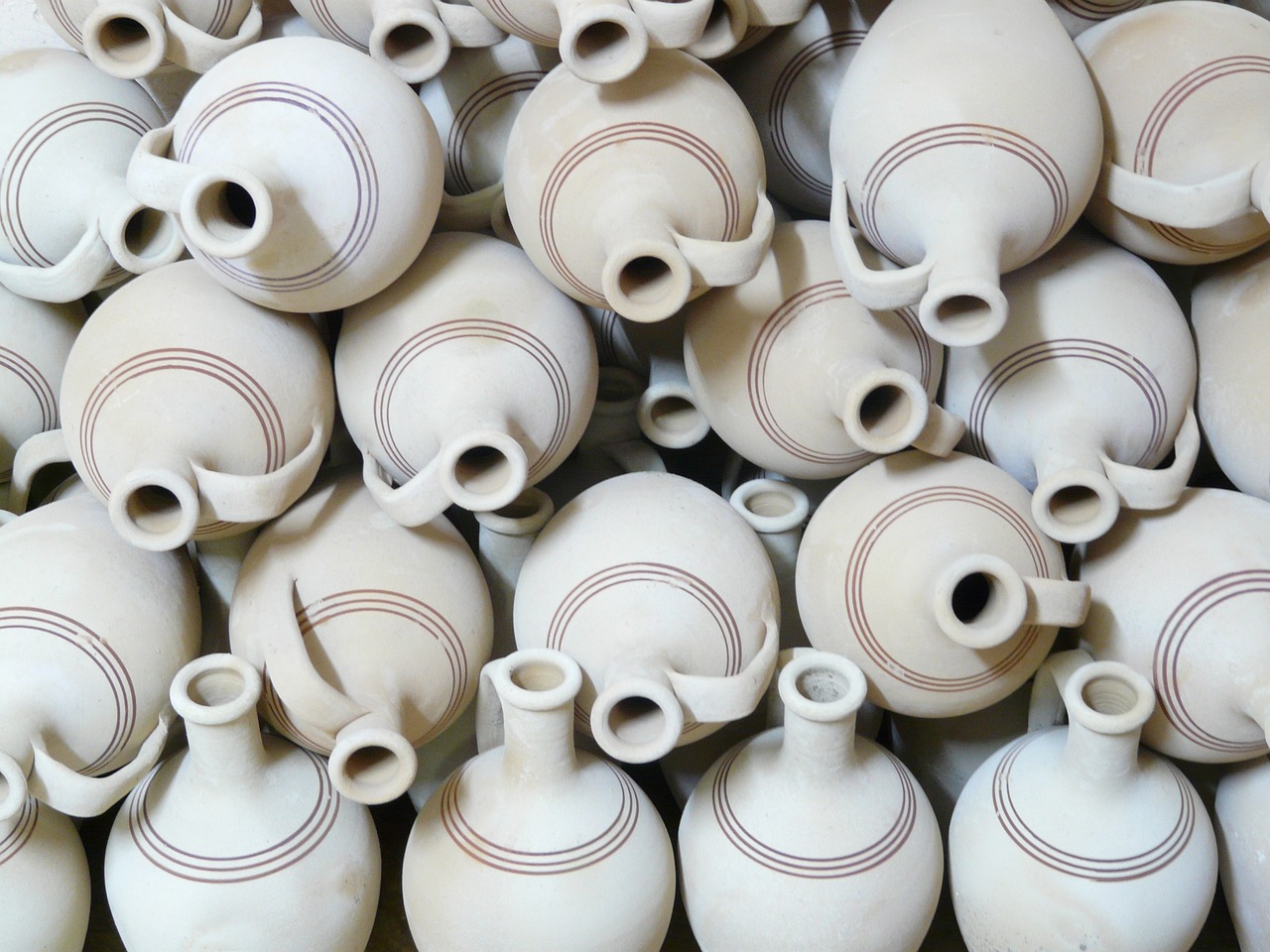
Handbuilding vs. Wheel-Throwing
When it comes to creating pottery, two primary methods stand out: handbuilding and wheel-throwing. Each technique has its own unique charm and offers different advantages, making them both essential in the world of Japanese ceramics. Imagine handbuilding as a sculptor molding clay with their hands, while wheel-throwing resembles a dancer gracefully moving to the rhythm of a spinning wheel.
Handbuilding is often seen as the more traditional method, allowing artists to connect intimately with their material. This technique involves shaping the clay by hand, using tools like fingers, paddles, and coils. It’s a process that encourages creativity and spontaneity, resulting in pieces that often have a rustic and organic feel. Artists can create various forms, from simple bowls to intricate sculptures, each piece telling its own story. The beauty of handbuilding lies in its versatility; it can be as simple or complex as the artist desires.
In contrast, wheel-throwing is a technique that requires a potter’s wheel, where the clay is centered and shaped as it spins. This method is often associated with precision and uniformity, allowing artists to create symmetrical forms with ease. Think of it as a dance where the potter must maintain balance and rhythm to produce a perfect piece. Wheel-thrown pottery often features smooth surfaces and refined shapes, making it ideal for functional ware like cups and plates. However, the skill involved in wheel-throwing should not be underestimated; mastering this technique can take years of practice.
Both techniques have their place in the world of Japanese ceramics, and many artists choose to incorporate elements of both in their work. For instance, a potter might start with a wheel-thrown base and then add handbuilt details, creating a harmonious blend of the two methods. This fusion not only showcases the artist's versatility but also highlights the beauty of combining traditional techniques with personal expression.
To illustrate the differences and similarities between handbuilding and wheel-throwing, consider the following table:
| Aspect | Handbuilding | Wheel-Throwing |
|---|---|---|
| Technique | Shaping clay by hand | Shaping clay on a spinning wheel |
| Style | Organic and unique forms | Symmetrical and refined shapes |
| Skill Level | Accessible for beginners | Requires more practice and skill |
| Creative Freedom | High; allows for personal expression | Moderate; focuses on precision |
In conclusion, whether you lean towards the tactile experience of handbuilding or the rhythmic elegance of wheel-throwing, both methods contribute to the rich tapestry of Japanese ceramic art. Each technique offers a different way to express creativity, allowing artists to explore the limitless possibilities that clay has to offer.
- What is the most common method used in Japanese ceramics? While both handbuilding and wheel-throwing are popular, wheel-throwing is often favored for producing functional ware.
- Can I learn both techniques? Absolutely! Many artists experiment with both methods to create unique pieces that showcase their skills.
- Is handbuilding easier than wheel-throwing? Handbuilding can be more accessible for beginners, but both techniques require practice to master.
- What type of pottery can I create with handbuilding? You can create a wide variety of items, including bowls, sculptures, and decorative pieces.

Notable Styles
Japanese ceramics are a treasure trove of artistic expression, showcasing a variety of styles that reflect the country's rich cultural heritage. Each style tells a story, capturing the essence of the era and the artisans behind the craft. Among the myriad of styles, a few stand out for their unique aesthetics and historical significance. Let's delve into some of the most notable styles that have emerged over the centuries.
One of the most recognized styles is Imari porcelain, which originated in the early 17th century. Known for its vibrant colors and intricate designs, Imari porcelain is a feast for the eyes. The production of Imari involves a meticulous process, where artisans apply cobalt blue, red, and gold glazes to create stunning patterns. These pieces were initially made for export, captivating European markets and influencing global ceramic art.
The allure of Imari lies not just in its beauty but also in its symbolism. The motifs often feature auspicious symbols such as cranes and pine trees, representing longevity and resilience. This style is not merely decorative; it embodies the wishes and hopes of the giver, making it a cherished gift.
Another notable style is Shino ware, which is celebrated for its rustic charm and earthy tones. Emerging in the late 16th century, Shino ware is characterized by its unique glazing techniques that result in a soft, tactile surface. The glazes often feature shades of white and orange, with variations that can appear almost sculptural. This style is particularly linked to the Japanese tea ceremony, where the aesthetics of the tea vessels play a crucial role in the overall experience.
Shino ware captures the essence of simplicity and natural beauty, reflecting the Japanese philosophy of wabi-sabi, which finds beauty in imperfection and transience. Each piece is unique, often showcasing the marks of the artisan's hand, making it a personal and intimate art form.
In addition to Imari and Shino, several other styles contribute to the richness of Japanese ceramics. These include:
- Karatsu Ware: Known for its earthy tones and simple forms, often used in tea ceremonies.
- Bizen Ware: Famous for its unglazed, natural finish, highlighting the clay's texture.
- Kyo-yaki: A style from Kyoto known for its delicate designs and intricate painting techniques.
Each of these styles not only showcases the technical skills of the artisans but also serves as a reflection of the cultural and historical context in which they were created. They invite us to appreciate the beauty of craftsmanship and the stories embedded in each piece.
Q: What is the significance of Japanese ceramic art?
A: Japanese ceramic art holds cultural significance as it reflects the aesthetics and philosophies of Japanese society, particularly the concepts of simplicity and harmony with nature.
Q: How do traditional techniques influence contemporary ceramics?
A: Traditional techniques serve as a foundation for contemporary artists, who often blend these methods with modern innovations to create unique expressions.
Q: Are there any specific trends in modern Japanese ceramics?
A: Yes, contemporary trends include the fusion of traditional styles with global influences, as well as a focus on sustainability and eco-friendly materials.
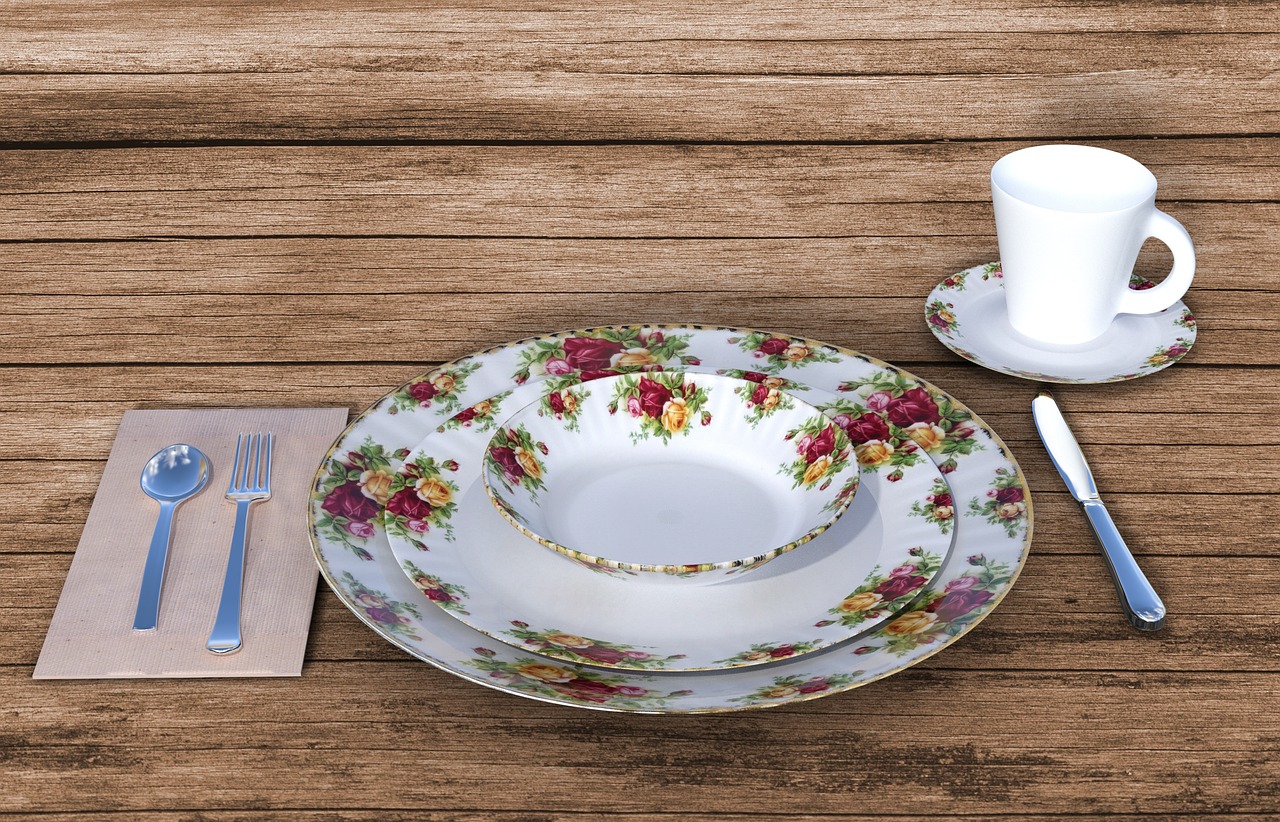
Imari Porcelain
Imari porcelain is a stunning representation of Japanese ceramic art, celebrated for its vibrant colors and intricate designs. Originating from the Arita region in Japan during the early 17th century, this type of porcelain was initially exported to the West through the port of Imari, which is how it got its name. The rich history of Imari porcelain is not just about aesthetics; it reflects the cultural exchanges and trade dynamics of its time. Imagine a world where these beautiful pieces traveled across oceans, becoming treasures in European homes!
The production of Imari porcelain involves a meticulous process that combines artistry with skilled craftsmanship. Craftsmen use a technique known as overglaze painting, which allows for the application of vivid colors and intricate patterns after the initial firing of the clay body. This method results in a stunning array of designs, often featuring motifs such as flowers, landscapes, and mythical creatures. The color palette typically includes rich blues, reds, and golds, creating a striking contrast that captures the eye.
One of the most fascinating aspects of Imari porcelain is its cultural significance. It became a symbol of luxury and sophistication in Europe during the 18th century, influencing Western ceramics and inspiring artists to adopt similar techniques. The allure of Imari porcelain extended beyond its beauty; it represented the exotic and the unknown, sparking curiosity and admiration among collectors and connoisseurs alike.
To better understand the characteristics of Imari porcelain, here’s a quick overview of its defining features:
| Feature | Description |
|---|---|
| Color | Vibrant shades of blue, red, and gold |
| Designs | Intricate patterns often depicting nature and mythology |
| Technique | Overglaze painting on a white porcelain body |
| Historical Context | Exported to Europe in the 17th century, influencing Western ceramics |
Today, Imari porcelain remains highly sought after by collectors and enthusiasts. Its blend of tradition and artistry continues to inspire modern ceramicists, who draw on its techniques and aesthetics to create contemporary works. Whether displayed in a gallery or gracing the table of a tea ceremony, Imari porcelain stands as a testament to Japan's rich cultural heritage and the timeless beauty of its ceramic art.
As we explore the world of Imari porcelain, one can’t help but wonder: how does something so beautifully crafted tell a story that transcends time and geography? The answer lies in its ability to connect cultures, evoke emotions, and inspire a sense of wonder—qualities that make Japanese ceramics truly remarkable.
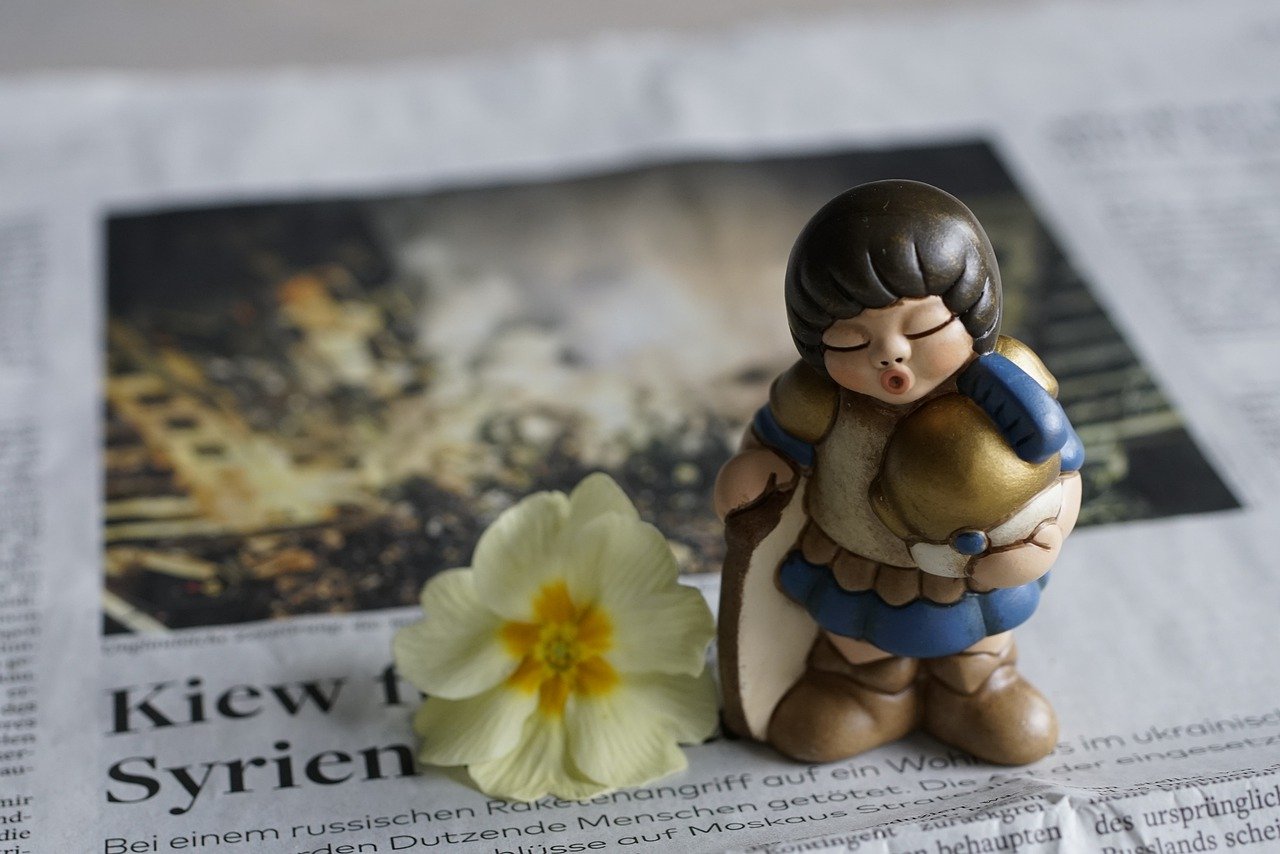
Shino Ware
is a fascinating style of Japanese ceramics that has captured the hearts of many art enthusiasts and collectors around the globe. Originating in the 16th century during the Momoyama period, this unique pottery is characterized by its rustic charm and earthy tones, making it a staple in traditional Japanese tea ceremonies. But what exactly makes Shino ware so special? Let’s dive into its history, distinctive features, and the techniques that define this remarkable art form.
The roots of Shino ware can be traced back to the Mino region of Japan, where it was initially produced by potters who were inspired by the aesthetics of the tea ceremony. The style is particularly known for its thick, white glaze that often exhibits a range of colors, from soft peach to deep orange, depending on the firing conditions. This glaze is achieved through a unique firing process that allows for subtle variations in texture and color, giving each piece its own personality. The beauty of Shino ware lies in its imperfections, which are celebrated rather than shunned.
One of the most intriguing aspects of Shino ware is its glazing technique. Potters often apply the glaze in a manner that creates a textural contrast on the surface of the pottery. For example, the use of iron oxide in the glaze can result in striking red hues when fired at high temperatures. Moreover, the glaze tends to pool in certain areas, creating a drippy effect that adds to the overall aesthetic. This unpredictability is what makes each Shino piece a true work of art.
Shino ware is not just about aesthetics; it also carries deep cultural significance. Many pieces are made specifically for tea ceremonies, where the beauty of the vessel enhances the experience of the tea itself. The rustic nature of Shino ware complements the simplicity and mindfulness of the ceremony, making it a perfect match for the values it embodies. In fact, the philosophy of Wabi-Sabi, which finds beauty in imperfection and transience, resonates deeply with the essence of Shino ware.
In recent years, Shino ware has experienced a resurgence in popularity, with contemporary artists experimenting with traditional techniques while incorporating modern influences. This evolution has led to a new wave of creativity within the Shino style, where artists are pushing boundaries and redefining what Shino ware can be. They are exploring new forms, colors, and firing techniques, making it an exciting time for collectors and enthusiasts alike.
In conclusion, Shino ware stands as a testament to the rich history and artistry of Japanese ceramics. Its unique blend of tradition and innovation, along with its deep cultural roots, makes it a captivating subject for anyone interested in the world of pottery. Whether you are a seasoned collector or a newcomer to the art form, Shino ware offers a glimpse into the beauty of imperfection and the timeless appeal of handcrafted artistry.
- What is Shino ware? Shino ware is a type of Japanese pottery known for its rustic charm, earthy tones, and unique glazing techniques.
- When did Shino ware originate? Shino ware originated in the 16th century during the Momoyama period in the Mino region of Japan.
- What makes Shino ware unique? Its distinctive thick white glaze, which can exhibit a range of colors and textures, along with its cultural significance in tea ceremonies, sets it apart from other ceramics.
- Can Shino ware be used in tea ceremonies? Yes, Shino ware is often used in traditional Japanese tea ceremonies, enhancing the overall experience with its aesthetic appeal.
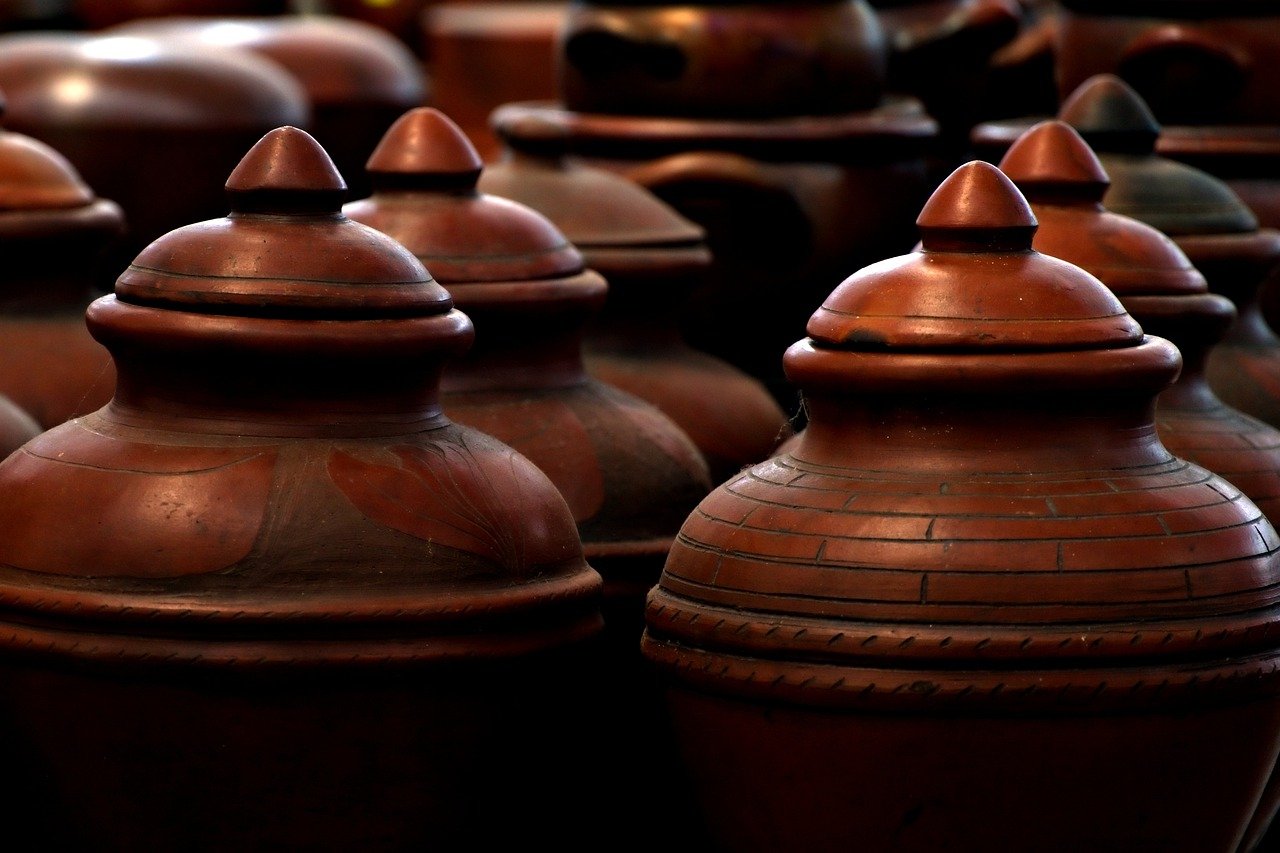
Contemporary Japanese Ceramics
As we step into the vibrant world of , we find a fascinating blend of age-old traditions and modern innovations. Today’s artists are not just preserving the past; they are actively reshaping it, breathing new life into ancient techniques while incorporating contemporary ideas and aesthetics. This dynamic fusion creates a diverse landscape of ceramic art that is as exciting as it is beautiful. Have you ever wondered how traditional practices can evolve to reflect the current cultural climate? Let’s dive deeper!
One of the most striking aspects of contemporary Japanese ceramics is the way artists are experimenting with materials and techniques. While some potters remain dedicated to traditional methods, others are pushing boundaries by integrating unexpected elements such as recycled materials, unconventional glazes, and even digital technologies. This not only challenges the norms of ceramic production but also invites a broader audience to appreciate the art form. The result? A captivating array of pieces that tell stories of both heritage and innovation.
Moreover, the influence of global art movements cannot be overlooked. With the world becoming more interconnected, Japanese ceramic artists are increasingly drawing inspiration from Western art and design. This cultural exchange has led to a remarkable evolution in style and technique. For instance, some artists are adopting minimalist aesthetics reminiscent of Scandinavian design, while others embrace bold colors and forms that echo the vibrancy of contemporary pop art.
To illustrate this point, let’s take a look at a few emerging trends in contemporary Japanese ceramics:
- Eco-Friendly Practices: Many artists are now focusing on sustainability, utilizing natural materials and eco-conscious processes to create their works.
- Interactive Ceramics: Some creators are designing pieces that encourage interaction, transforming traditional objects into participatory art experiences.
- Mixed Media: The blending of ceramics with other art forms, such as painting and sculpture, is becoming increasingly popular, resulting in innovative cross-disciplinary works.
These trends showcase the limitless possibilities within the realm of contemporary ceramics. As artists continue to explore new ideas and methods, the boundaries of what ceramic art can be are constantly expanding. This evolution is not just about aesthetics; it’s about storytelling and connection. Each piece crafted today carries the weight of history while simultaneously making a statement about the present and future.
In addition to the artistic evolution, the market for contemporary Japanese ceramics is thriving. Galleries and exhibitions dedicated to showcasing these innovative works are popping up not just in Japan but around the globe. Collectors and enthusiasts are drawn to the unique narratives and craftsmanship behind each piece, making contemporary ceramics a sought-after commodity in the art world.
As we look ahead, it’s clear that the future of Japanese ceramics is bright. With an exciting mix of tradition and modernity, the art form is poised to continue captivating audiences worldwide. Whether you’re a seasoned collector or a curious newcomer, there’s never been a better time to explore the rich tapestry of contemporary Japanese ceramics.
Q: What are some of the key characteristics of contemporary Japanese ceramics?
A: Contemporary Japanese ceramics often blend traditional techniques with modern aesthetics, using innovative materials and methods to create unique pieces that reflect both heritage and current trends.
Q: How have global influences shaped contemporary Japanese ceramics?
A: Global influences have introduced new styles and ideas, allowing artists to incorporate elements from Western art movements and other cultures, resulting in a diverse range of ceramic works.
Q: Where can I find contemporary Japanese ceramics?
A: Contemporary Japanese ceramics can be found in galleries, exhibitions, and online marketplaces. Many artists also showcase their work on social media platforms.
Q: Are there any eco-friendly practices in contemporary Japanese ceramics?
A: Yes, many contemporary artists are focusing on sustainability by using natural materials and eco-conscious production methods to minimize their environmental impact.
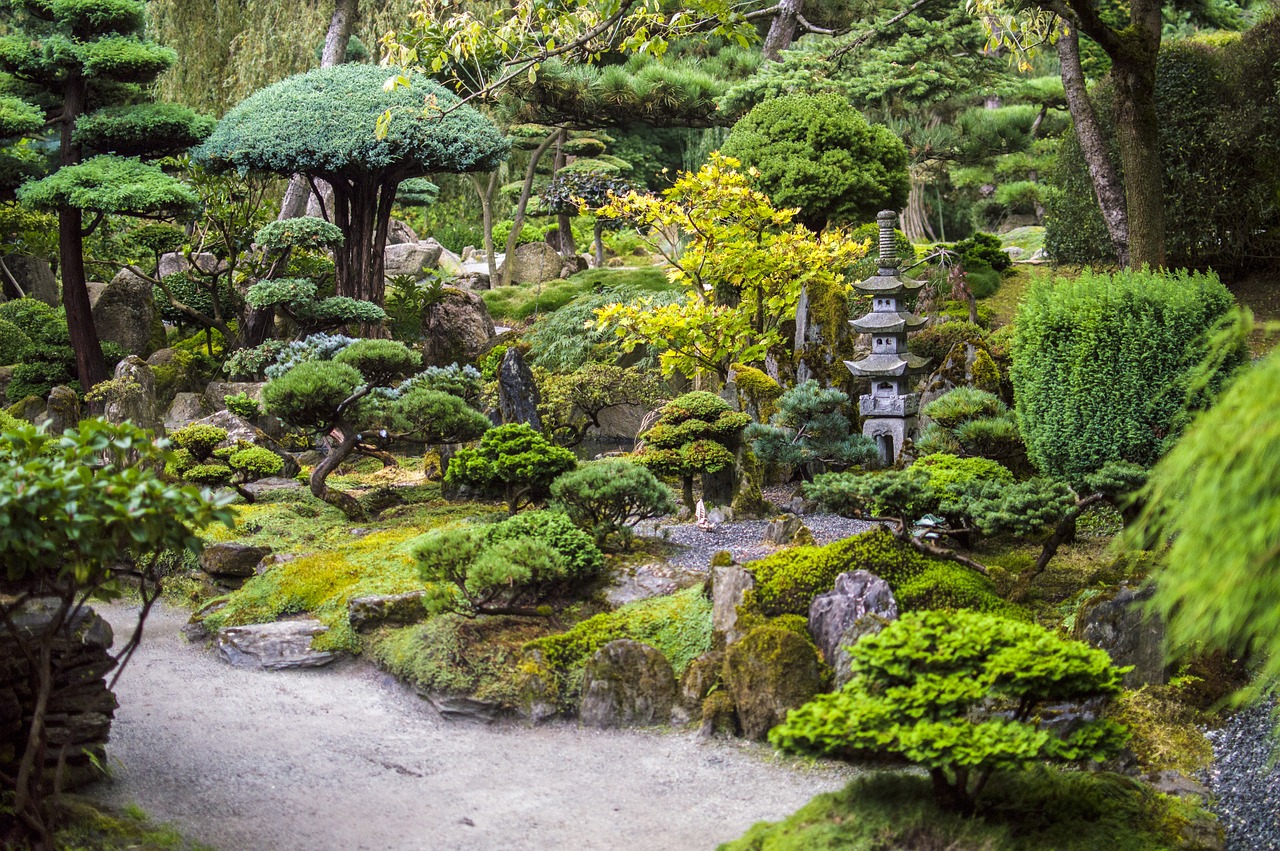
Influence of Western Art
The interaction between Japanese ceramics and Western art has been nothing short of transformative, creating a fascinating dialogue between tradition and modernity. As globalization began to take hold in the late 20th century, Japanese artists found themselves increasingly influenced by Western aesthetics, techniques, and philosophies. This cultural exchange has not only enriched the art form but has also led to the emergence of innovative styles that blend the best of both worlds.
One of the most significant impacts of Western art on Japanese ceramics is the introduction of new materials and firing techniques. For instance, artists began experimenting with stoneware and porcelain that were previously less common in traditional Japanese practices. This shift allowed for a broader range of textures and finishes, expanding the creative possibilities for ceramicists. The use of glazes also evolved, with Western influences introducing vibrant colors and experimental applications that were not typical in traditional Japanese methods.
Moreover, the concept of art as expression rather than just utility has taken root in Japan, encouraging artists to explore their personal narratives through ceramic art. This shift can be likened to a painter stepping away from the canvas to create a sculpture; it reflects a desire to break free from the constraints of traditional roles. As a result, contemporary Japanese ceramists often incorporate themes of identity, nature, and even social commentary into their work, reflecting a broader understanding of art's role in society.
In addition to material and thematic influences, the Western art movement has also inspired collaborative projects between Japanese and Western artists. These partnerships often lead to unique exhibitions that showcase the fusion of styles, allowing audiences to appreciate the beauty of both traditions. For instance, the annual Seto Ceramics Festival often features international artists, creating a melting pot of ideas and techniques.
To illustrate the impact of Western art on Japanese ceramics, here's a brief comparison of traditional Japanese techniques and modern adaptations:
| Aspect | Traditional Japanese Ceramics | Modern Adaptations |
|---|---|---|
| Materials | Primarily clay and natural glazes | Incorporation of stoneware, porcelain, and synthetic glazes |
| Techniques | Handbuilding and wheel-throwing | Experimental firing methods and mixed media |
| Themes | Utility and tradition | Personal expression and contemporary issues |
| Collaborations | Mostly local artisans | International projects with Western artists |
This blending of styles and ideas has not only enriched the landscape of Japanese ceramics but has also created a space for dialogue between cultures. As artists continue to push boundaries, the future of Japanese ceramics promises to be as vibrant and diverse as the influences that shape it. This ongoing interaction between East and West not only reflects a globalized world but also serves as a reminder of the power of art to transcend cultural barriers and foster understanding.

Emerging Artists
In the vibrant world of Japanese ceramics, a new wave of is making waves, redefining traditional practices and pushing the boundaries of this ancient art form. These talented individuals are not only preserving the rich heritage of Japanese ceramics but are also infusing their unique perspectives and styles, creating a fascinating blend of the old and the new. As we delve into the realm of these artists, we discover how their innovative approaches are reshaping the landscape of ceramic art.
Many of these emerging artists have been inspired by the cultural significance of ceramics in Japan, particularly in relation to the tea ceremony, which has long been a cornerstone of Japanese culture. They often seek to explore the deeper meanings behind their work, using their art as a medium for storytelling and personal expression. For instance, some artists incorporate elements of nature into their designs, reflecting the beauty of the Japanese landscape and its changing seasons.
One notable trend among these new artists is the experimentation with materials and techniques. While traditional methods are respected, many are eager to incorporate modern technologies and unconventional materials into their practice. This fusion of techniques can lead to stunning results, such as:
- Mixed Media: Combining ceramics with glass, metal, or textiles to create multi-dimensional pieces.
- Digital Techniques: Utilizing digital printing methods to apply intricate designs that would be difficult to achieve by hand.
- Eco-Friendly Practices: Focusing on sustainable materials and processes to minimize environmental impact.
Moreover, the global art scene has a profound influence on these artists. Many have traveled abroad or collaborated with international artists, bringing fresh ideas back to Japan. This cultural exchange enriches their work, allowing them to create pieces that resonate with a broader audience. Their exhibitions often showcase a mix of traditional Japanese aesthetics and contemporary art trends, appealing to both local and international collectors.
As we look to the future, it's clear that these emerging artists are not just creating pottery; they are crafting a narrative that bridges generations. Their work invites us to reflect on the past while embracing the possibilities of the future. It’s an exciting time for Japanese ceramics, and the contributions of these artists will undoubtedly shape its evolution for years to come.
Q: Who are some notable emerging artists in Japanese ceramics?
A: Some emerging artists include Yuki Nishijima, known for her innovative use of traditional glazes, and Hiroshi Yoshida, who blends modern aesthetics with ancient techniques.
Q: How can I support emerging ceramic artists?
A: You can support them by visiting galleries, purchasing their work, or following them on social media to stay updated on their latest projects and exhibitions.
Q: What techniques are commonly used by these artists?
A: Many emerging artists experiment with a variety of techniques, including traditional handbuilding, wheel-throwing, and modern digital printing methods.
Q: Are there any workshops or classes available to learn about Japanese ceramics?
A: Yes, many studios and art schools in Japan and abroad offer workshops where you can learn about traditional and contemporary ceramic techniques.
Frequently Asked Questions
- What is the history of Japanese ceramics?
Japanese ceramics boast a vibrant history that stretches back thousands of years. It began with earthenware from ancient times and evolved through various periods, reflecting the cultural and artistic changes of Japan. Each era brought new techniques and styles, creating a rich tapestry of ceramic art that is still celebrated today.
- What are the traditional techniques used in Japanese ceramics?
Traditional Japanese ceramic techniques are characterized by their precision and artistry. Notable methods include handbuilding and wheel-throwing, each offering unique textures and forms. Additionally, techniques like Raku firing are renowned for producing distinctive pieces that are integral to Japanese tea ceremonies.
- What is Raku firing?
Raku firing is a unique ceramic technique that produces vibrant textures and colors through a specific firing process. It originated in the 16th century and is closely associated with the Japanese tea ceremony. The process involves removing pottery from the kiln while it is still hot and placing it in combustible materials, creating dramatic effects.
- How has Raku evolved in modern times?
In contemporary art, Raku has seen innovative adaptations as artists experiment with new techniques and materials. While still honoring traditional methods, many modern ceramists blend Raku with contemporary aesthetics, creating exciting new forms that push the boundaries of this ancient craft.
- What are the differences between handbuilding and wheel-throwing?
Handbuilding and wheel-throwing are the two primary methods of creating pottery. Handbuilding involves shaping clay by hand, allowing for unique and organic forms. In contrast, wheel-throwing uses a potter's wheel to create symmetrical pieces. Each method has its own charm and application in Japanese ceramics, catering to different artistic expressions.
- What are some notable styles of Japanese ceramics?
Japanese ceramics feature a variety of styles, each with its own aesthetic and cultural significance. Imari porcelain is famous for its vibrant colors and intricate designs, while Shino ware is known for its rustic charm and earthy tones. Each style reflects the history and artistry of its time, contributing to Japan's rich ceramic heritage.
- How has Western art influenced contemporary Japanese ceramics?
Western art has had a significant impact on contemporary Japanese ceramic artists, leading to a fusion of styles and techniques. This cultural exchange has encouraged artists to explore new concepts and forms, resulting in a dynamic evolution of Japanese ceramics that resonates with global art movements.
- Who are some emerging artists in Japanese ceramics?
A new generation of artists is redefining Japanese ceramics, bringing fresh perspectives and innovative techniques to the craft. These emerging talents are experimenting with materials and forms, contributing to the ongoing evolution of the art form and ensuring its relevance in the modern world.



















